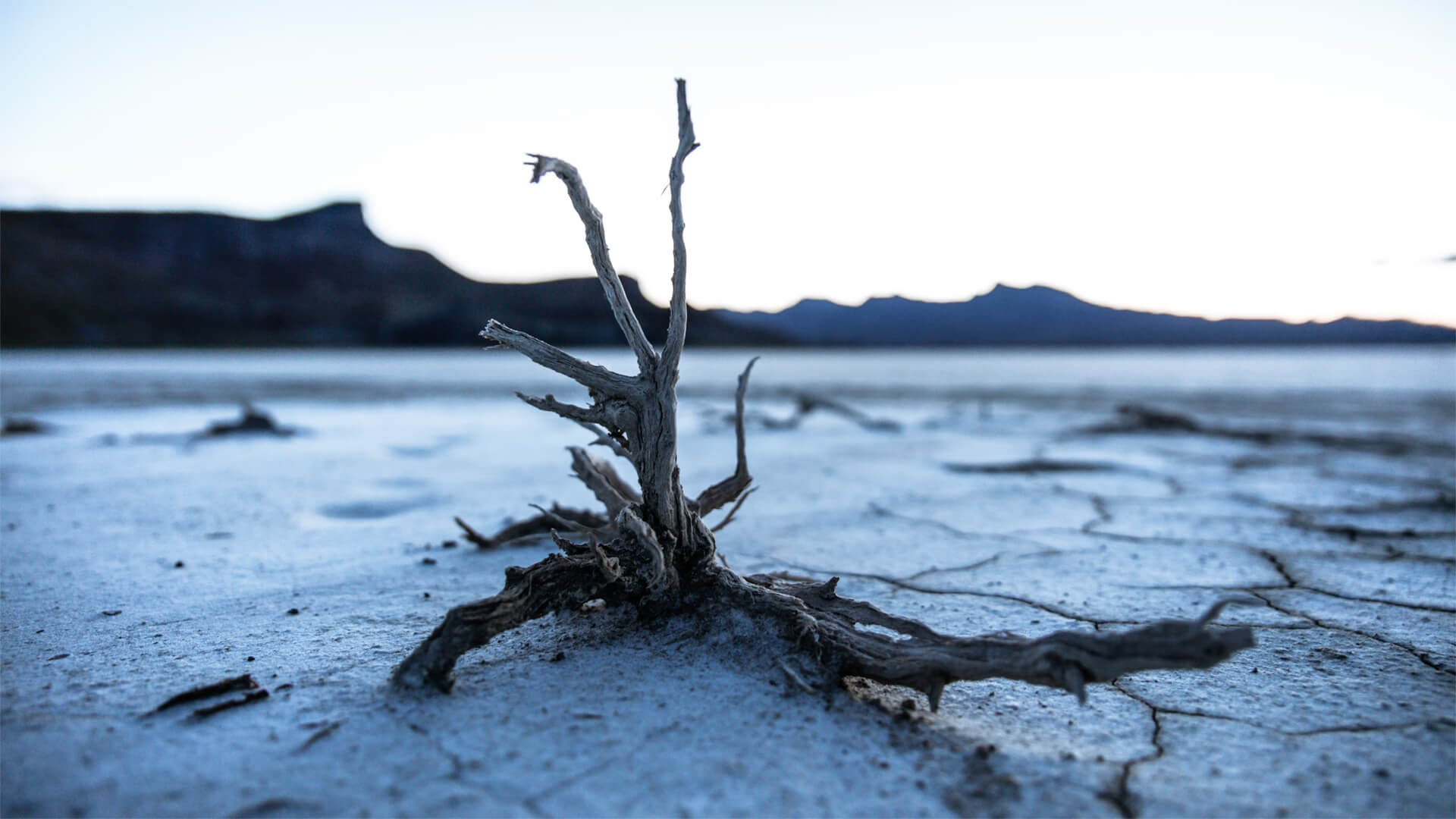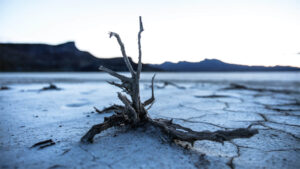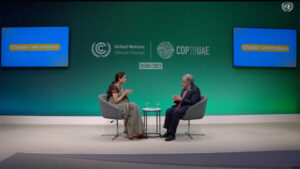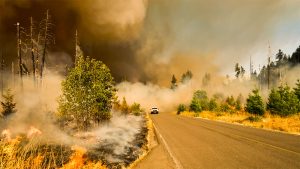Let’s talk climate change. With conservative estimates, we’re looking at a few degrees of warming by the end of the century, but if we look at this in the light of global trends, it could be even worse.
This will manifest in more heat and humidity, especially in already hot and humid regions – think Singapore, Houston and parts of the Middle East. This will drive up mortality rates and decrease functionality, which will have an outsized impact on the poorer areas.
Food production is a big concern of mine. As temps warm, wind and moisture patterns will be altered. While this will benefit some areas (increasing water availability and potential for multiple harvests), many regions will lose their agriculture industry or face increased challenges in maintaining production. The main crop to watch is wheat, since it’s currently grown in marginal areas that will be most impacted by climate shifts.
Between climate change, depopulation, and deglobalization, we’re going to have plenty to talk about in the coming decades…
Here at Zeihan on Geopolitics, our chosen charity partner is MedShare. They provide emergency medical services to communities in need, with a very heavy emphasis on locations facing acute crises. Medshare operates right in the thick of it, so we can be sure that every cent of our donation is not simply going directly to where help is needed most, but our donations serve as a force multiplier for a system already in existence.
For those who would like to donate directly to MedShare or to learn more about their efforts, you can click this link.
Transcript
Hey, everybody. Peter Zeihan here coming to you from a colorful Colorado. Today we’re taking an entry from the Ask Peter forum, specifically what I think the world will look like with a few degrees of warming. Since the industrial period began, we’re up 1.2°C, and assuming nothing changes, we are on track to be probably 3 to 4°C warmer by the end of the century.
And I think that’s overly optimistic because if we really are getting ready for a globalization period in human history, then the lower carbon fuels, oil, and gas are the ones that are internationally traded, and those are the ones that will vanish. And the high complexity fuel systems that require a dozen or more countries in order to make them function, say, solar, are not going to be available in large quantities.
So that will leave most countries with significant economic degradation. And if they still want electricity and heat, they’re going to have to use coal and/or wood. That’s a problem. So I would estimate we’re going to skid right past six degrees by the end of the century, and that’s six degrees centigrade, not Fahrenheit. So it’s a pretty significant change.
The downside with making specific forecasts is that, n equals one, as they like to say, we don’t have records in data to be able to provide us with very specific recommendations. What I’m about to say is probably should be considered much more broadly than I’m even going to say it, but there are a couple of patterns we can look at.
But because we do have over a century of hard data indicating that we are moving in this direction and what some of the early impacts can be. So number one, heat and humidity. As a rule, when the air gets warmer, it can hold more water. That’s a problem for hurricanes. But it also means that places that are already humid are likely to get more humid.
And think of it this way: if you live in a place that is already warm and humid for most of the year—I’m thinking here, Singapore, or Manila, or Houston—you know it’s going to get warmer, you know it’s going to get more humid. And when you pass a certain point, roughly, you know, 90°F, the body has a hard time cooling down.
And when you pass 100°F, it just doesn’t happen. And a lot of these places are going to be edging into a zone where they’re looking at hitting that 90-degree temperature in the night for large portions of the year. And so the implications for human health are pretty damning there. And functionality will be a real problem. Mortality rates will certainly spike.
And so you have to look at the economic capability of these cities and whether or not they can make this adjustment. I mean, some of them, Houston, Singapore, pretty much all of the Arab cities of the Persian Gulf, did this years ago. And you basically go from your air-conditioned house to your air-conditioned garage to an air-conditioned parking garage to an air-conditioned office block.
And if you happen to be one of those poor saps investor works outside, that’s too bad. But, like the Arabs in the Gulf has certainly shown that you can force people to work in 110-degree temperatures for short periods of time. You can still get stuff built. It’s not the best way to live. And you do have mortality rates that are a lot higher.
The Arabs get around this by using guest labor, which is a step off of slave, and then when they get too old to handle it, like, you know, 32, they send them home. But there are models that work—just the bulk of your population basically lives in an aquarium. Then you’ve got the cities that, due to economic vibrancy or strength or soon-to-be vibrancy, are likely to be able to make this transition.
They either on the edge of having enough money to make everybody live indoors, or they’re going to have it soon. I’m thinking there about Ho Chi Minh City in Vietnam. Or, Istanbul in Turkey, or Bangkok in Thailand, or maybe, just maybe, Rio de Janeiro in Brazil. And then you’ve got those cities that, it doesn’t look great.
They’re hot, they’re humid. And having the organizational capability and especially economic resources in order to make the switch, less problematic. And this is going to be most of the cities, especially in northern India. This is going to be Pakistan. I’m worried about the cities of northern Brazil in this regard. There are some cities in Iran that don’t look particularly promising.
A lot of North Africa falls into a similar category. These are just places where the economic wherewithal or the strength of the state is simply not sufficient in order to rewire all the infrastructure for a different sort of life. The second big category is going to be food production. There’s a lot about climate change and the specific effects that we’re still in the very early phases of learning.
So I don’t want to blow this out of proportion. But one of the things we do know for certain is that the poles are warming faster than the equator. And when you have big temperature differentials, you get winds, in this case, winds going from roughly the equator in the direction of the poles. Now that changes, most importantly, moisture patterns.
So if there is a large body of tropical or similar tropical water between you and the equator, when the wind goes over that zone, it’s going to pick up more moisture. Remember the water? The year is warmer, too, and you’re going to get storms going from the equator towards the pole, transferring moisture. Now this is good or bad based on where you are.
So, for example, if you are in the United States, especially in the Midwest, you’re looking at more moisture coming in from the Gulf, and warmer moisture at that. So you now have two streams of moisture. You have the jet stream that goes west to east across the continent, that brings moisture. And now you’ve got this Gulf current that’s always been there but is going to be much more powerful.
You live on the coast. That means hurricanes, which is not great. But if you’re in, say, Illinois, it means you’re actually getting more and more water. And water management is the issue. Well, as we’ve seen with plants, plants are a lot like people. As long as you can get a lot of water, then you don’t have to worry so much about the heat.
So we’re starting to see in parts of the Midwest—not even the southern Midwest, most notably Illinois—where we’re starting to see the very early stages of double cropping. So this is one of those where climate change could actually have a very positive impact on global agriculture. Other places that do have this tropical feature aren’t necessarily as well positioned to take advantage of it.
So like Mexico has this, China has this, but these are very rugged areas. And if you just dump more water in a rugged area, you get landslides, mudslides, and flooding. So not exactly great for agriculture. Other places are looking to probably get dried out by this factor because if you don’t have a tropical body of water below you, maybe you’ve got a desert.
And that describes the entirety of the Russian wheat belt, including Kazakhstan. So you’re looking at that area becoming desiccated. Northern Europe, while not exactly going to be falling out of its breadbasket status, has been seen. The weather patterns move steadily offshore for the last half-century as a result of this phenomenon. They do have the Mediterranean below them, but it’s not warm enough.
It’s not large enough, and so these winds are simply pushing normal moisture patterns out to sea or into Scandinavia. Australia could be a bit of a problem because the part of Australia that actually grows the food is on the southwest and the south, and while they do have this moisture effect that is kind of hitting the north part of the country, that’s not where the agriculture is.
So similar effect to what’s happening to Europe, just on the opposite side of the planet. So it’s pushing what weather used to hit the Murray-Darling basin or the Perth area in Western Australia and pushing it south towards and could occur the crop that is going to be most impacted by this is by far is wheat.
Wheat is wheat. And so, it used to be the only thing that most places grew. But in the globalized era, everyone started growing what they could grow best in their zone. And wheat gave way to corn and soy and marijuana and avocados and alfalfa and all the rest. And so wheat gets pushed to the margins, the places where it’s the warmest, where it’s the driest, or it’s the coldest, whatever it happens to be, because it’ll grow anywhere.
Well, if you change the environment of the planet, the places that are going to be pushed into non-production are going to be the ones at the margin. And wheat is the crop in most places where they’re going to see the most pressure. In North America, that’ll be in the Great Plains. In Argentina, that’ll be the southern pampas. In the Eurasian space,
It’s definitely the entirety of the Russian wheat belt. And in Australia, it’s probably going to be Western Australia. So you take all of this together, and we’re looking at parts of the world that are more equatorial, more tropical, becoming less habitable, less dynamic. And you’re going to have to spend most of their money on adapting their population-supporting infrastructure simply to be able to be inhabitable.
And if you’re looking for agriculture, we’re looking at the number one calorie source for the world, being in much smaller supply that will obviously play through in the geopolitics. But until we actually see governments start to crack, it’s really hard to say how. Remember, at the same time this is all going on. We’ve got the globalization shattering merchandise trade and energy trade, and we also have depopulation shattering the ability of countries to have a tax base and a workforce.
So there’s going to be a lot of variables going on at once.








